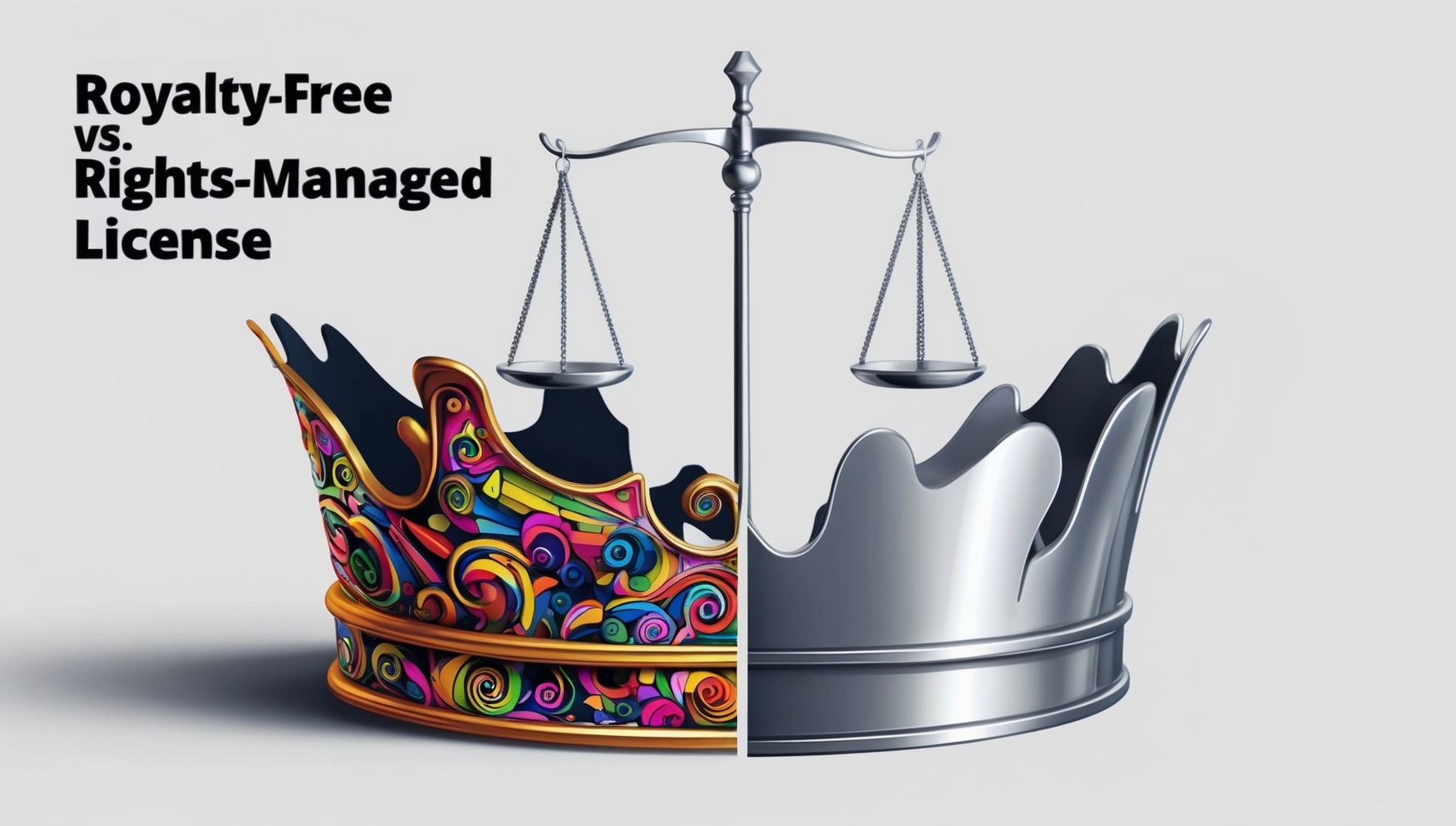When choosing stock images for your projects, understanding the difference between royalty-free and rights-managed licenses is crucial, as well as knowing how to use stock images legally to avoid any potential copyright issues. Each licensing model offers distinct advantages and limitations, depending on your needs and the nature of your project. Here’s a breakdown of royalty-free and rights-managed licenses to help you decide which is right for you.
1. Understanding Royalty-Free Licenses
A royalty-free (RF) license allows you to use an image for a one-time fee, without having to pay royalties or additional fees for each use. Once you purchase a royalty-free image, you can use it multiple times across different projects, as long as you adhere to the terms of the license.
Advantages of Royalty-Free Licenses:
- Cost-Effective: Royalty-free images are typically more affordable than rights-managed images, making them ideal for budget-conscious projects.
- Unlimited Use: You can use the image as many times as needed, across various platforms and media, without incurring additional costs.
- Instant Access: Royalty-free images are readily available, allowing you to download and use them immediately after purchase.
Limitations of Royalty-Free Licenses:
- Non-Exclusive Use: Since royalty-free images are sold to multiple buyers, the same image may be used by other individuals or companies, reducing the uniqueness of your project.
- Limited Control Over Usage: You have less control over how and where the image is used by others, which may result in the image appearing in competing or unrelated contexts.
2. Understanding Rights-Managed Licenses
A rights-managed (RM) license offers more control and exclusivity over the use of an image. With a rights-managed license, you pay a fee based on specific usage parameters, such as duration, geographic region, and the type of media in which the image will be used. Each use of the image requires a new license agreement. It’s important to be aware of the legal implications of stock images, especially with rights-managed licenses where violating usage terms could result in legal action.
Advantages of Rights-Managed Licenses:
- Exclusive Rights: Rights-managed licenses often provide the option for exclusive use, ensuring that the image is not used by anyone else within the agreed-upon parameters.
- Tailored Usage: You can tailor the license to your specific needs, ensuring that the image is used in a way that aligns with your project’s goals and audience.
- Higher Quality and Rarity: Rights-managed images are often higher quality and less commonly used, which can enhance the uniqueness and professionalism of your project.
Limitations of Rights-Managed Licenses:
- Higher Costs: Rights-managed licenses are generally more expensive than royalty-free licenses, particularly if you require exclusive rights or extensive usage.
- Restricted Usage: The usage of rights-managed images is more restricted, requiring careful adherence to the license terms and potentially additional fees for extended use.
- Longer Approval Process: Obtaining a rights-managed license may involve more negotiation and a longer approval process, which could delay your project.
3. Which License is Right for You?
Choosing between royalty-free and rights-managed licenses depends on your project’s specific needs, budget, and desired level of exclusivity. Additionally, regardless of the license type, knowing how to credit stock images correctly is crucial to comply with licensing terms and maintain the integrity of your work.
When to Choose Royalty-Free:
- Budget Constraints: If you need affordable images that you can use across multiple projects without worrying about additional fees, royalty-free is the better choice.
- Quick Turnaround: For projects that require immediate access to images, such as social media posts or web content, royalty-free images offer convenience and speed.
- Non-Exclusive Needs: If exclusivity is not a priority and you don’t mind others using the same image, royalty-free licenses provide a cost-effective solution.
When to Choose Rights-Managed:
- Exclusive Use: If your project requires a unique image that won’t appear in competing materials, investing in a rights-managed license is worthwhile.
- Specific Usage Requirements: For projects with specific needs, such as a particular geographic region or media type, rights-managed licenses offer the flexibility to customize usage terms.
- High-Value Projects: When working on high-profile or professional projects where quality and exclusivity are paramount, rights-managed images provide the control and assurance needed.
Conclusion
Understanding the differences between royalty-free and rights-managed licenses is key to making the right choice for your project. Royalty-free licenses offer affordability and flexibility, making them ideal for a wide range of uses. Rights-managed licenses provide exclusivity and tailored usage, which are crucial for high-value projects. Assess your project’s needs, budget, and desired level of control to determine which licensing model best suits your objectives.
